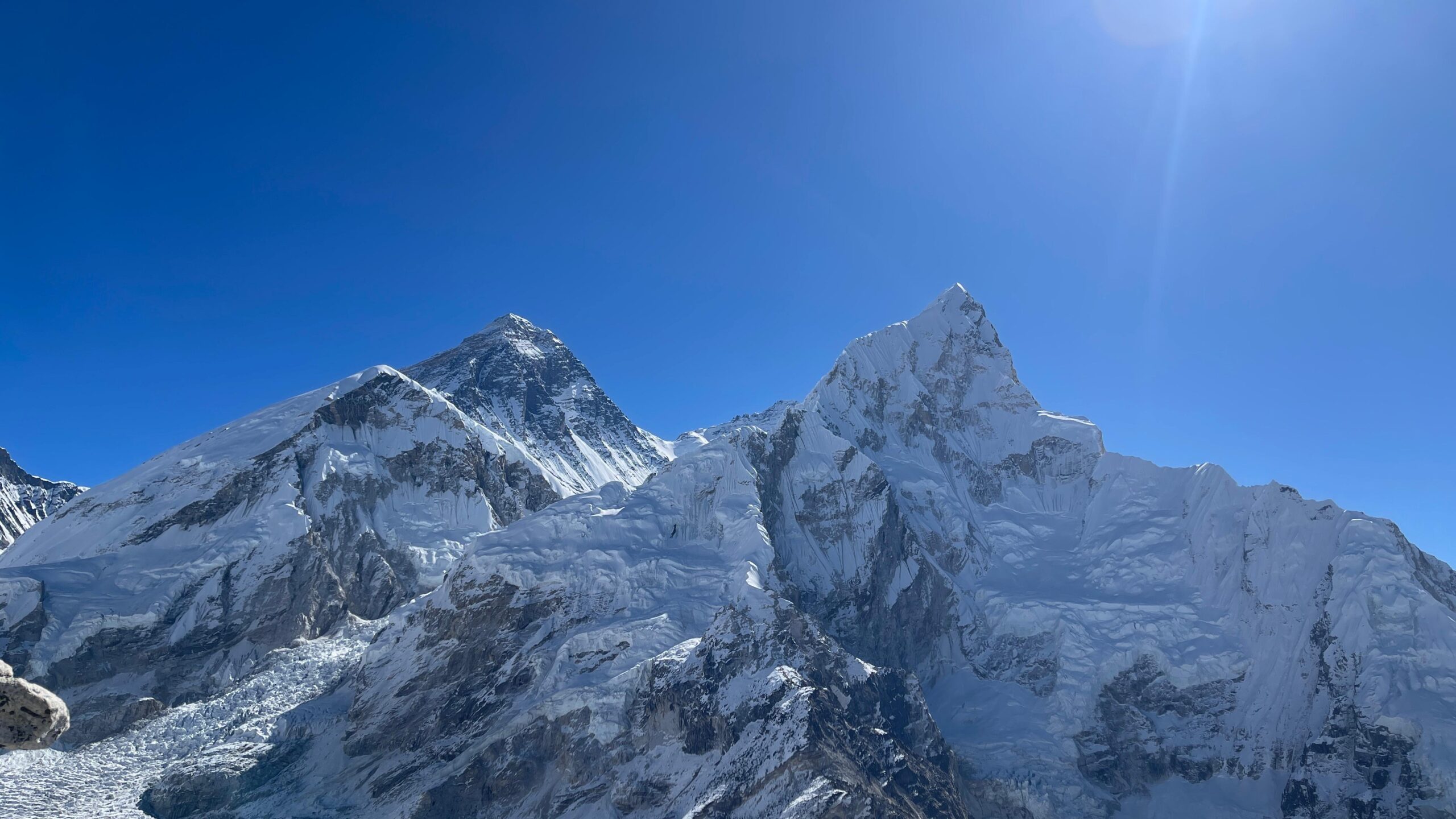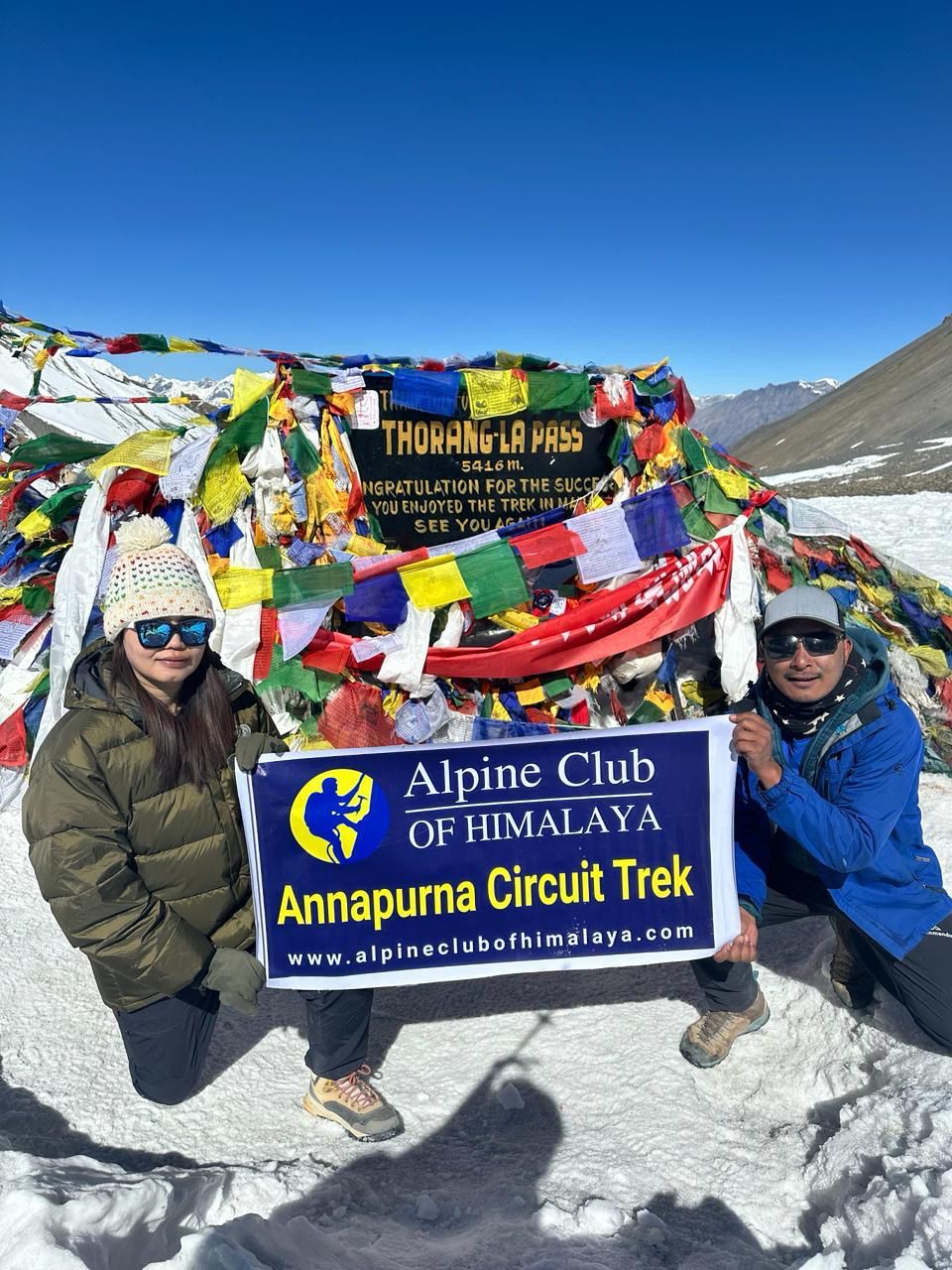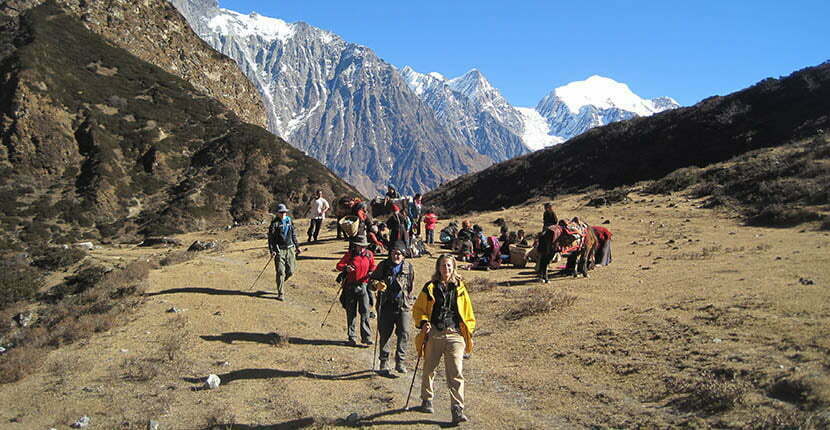Goky Cho La Pass Everest Base Camp and Kongma La Pass Trek is a 17-day adventure in the heart of the Nepalese Himalayas. This challenging trek takes you through some of the most stunning mountain landscapes in the world, including the magnificent Gokyo Lakes and the challenging Cho La Pass. You’ll also visit the iconic Everest Base Camp, which offers breathtaking views of Mount Everest, the highest peak in the world. Along the way, you’ll experience the Sherpa people’s rich culture and explore their ancient villages.
Gokyo Cho La Pass Everest Base Camp and Kongma La Pass Trek is an excellent opportunity for beginner hikers and experienced to soak in the unspoiled beauty of the Himalayas. Taking you across forgotten sections of trails, exploring villages, and getting a different perspective of the region. The trek takes you to the top of the Cho La Pass and Kongma-La Pass involving strenuous ascents but offering rewarding and breathtaking panoramic views of the surrounding peaks. The Gokyo Lakes, meanwhile, offers a serene and peaceful contrast to the rugged mountain landscape. Also head towards the Everest Base Camp and the Kala Patthar, a renowned vantage point of the region.
Whether you’re looking to challenge yourself physically or simply soak in the beauty of the Himalayas, the Gokyo, Cho La Pass, Everest Base Camp, and Kongma-La Pass Trek is an unforgettable experience. Be a part of this adventure with the Alpine Club of Himalaya.
Entry Permits and Requirements:
The trek requires two permits:
1) Sagarmatha National Park Entry Permit.
2) Khumbu Rural Municipality Entrance Permit.
The Nepal Tourism Boards office in Kathmandu or the park’s entrance gate in Monjo can provide you with Sagarmatha National Park Entry Permit for NRS 3000.
The fee for citizens of SAARC nations is NRS 1500.
You must complete the permit application and present your passport or a copy of your passport. You must be in Lukla to obtain the Khumbu Pasang Lhamu Rural Municipality Entrance Permit. The permission costs NRS 2000 and may be acquired at the rural municipality counter on the outskirts of the settlement.
You will not have to worry about waiting for permits since the Alpine Club of Himalaya or our guides will take care of everything.
Preparation for the Trek:
In brief, the trails are long, harsh, and with high cliffs and mountain terrains which is why trekkers need to be more prepared.
Thus, you must have strong physical and mental fitness, to withstand the difficulties in trekking. In addition, train your body hard enough so that it can resist pressure and frequently changing terrains.
Travel Insurance:
All clients participating in any activity must have travel insurance. Personal injury, death, hospital expenditures, repatriation fees, helicopter rescue, and any other disease covered by the insurance plan will be given, we highly advise you to acquire a comprehensive insurance plan from a trustworthy insurance company.
Passport and Visa:
Every client must have a valid passport from the return date with a 6 months prior validity by the Nepalese consulate in your country or the immigration office at Tribhuvan International Airport in Kathmandu.
Meals and drinking water:
Everest Region Trek is one of the most facilitated trekking destinations in the country, providing basic to luxury services.
In this trial, you will be provided with a variety of cuisine to choose from. Nepali, Tibetan, Indian, western as well as continental meals. As the region has small tea houses to luxury hotels the facilities, provided are basic to grandeur according to your budget.
Similarly, drinking water is accessible with natural water supplies which are untreated, so direct use of the water is not recommended, you may refill boiling water or cold filter water from any of the teahouses. However, if you buy a water purification tablet, chlorine drops, or utilize SODIS (sunlight assisted) filtration procedures for further assurance, saving money, and reducing plastic pollution.
Accommodation:
Accommodations are available in trekking lodges, teahouses, and several hotels all along the trail, providing basic, well-maintained, reasonably luxury 5-star ones with additional needs according to your budget. Tea houses on the trail vary in quality and price, depending on the amenities they feature.
The tea houses room has twin sharing beds and some basic furniture like a table or a chair. Normally, beds contain pillows and sheets and almost all tea houses provide extra blankets as it will be freezing at night. Usually, hot showers are available throughout the trek.
For trekkers who want to Camp, various campsites are available along the trail.
Transportations:
All the necessary transportation for your trip will be managed by us upon your request. Transportation is provided on a private as well as sharing basis. Solo travelers are provided with sharing or public transportation. Whereas travelers of two and above are provided with private transportation.
Potter and Guide:
Solo trekkers are provided with a single helper both acting as a Potter and Guide. For trekkers above two or more Potters and Guides are provided according to the size of the groups. Every two guest is provided with one potter.
Responsible Tourism:
As responsible for tourism we believe in respecting local communities, their culture, and rules. So, for that region, we would like you to follow some local rules and regulations during the trek. Always ask your guides for permission before doing something in the local community. Keep the environment clean. Help the local community to encourage the positive sides of tourism.
Best Time to Visit?
The best season for trekking to the Everest region during autumn and spring, the months of September, October, November, March, April, and May.
During the autumn season, the months of September, October, and November the weather is clear with warm temperatures and the visibility is great. As the weather is mild it is very easy to get around the region.
The spring season of March, April, and May are also the best time to visit the Everest region, marking the end of the winter, the spring season brings a change in the topography of the region and the destination comes to life with endless rows of different colored rhododendron, moss and orchid draped trees, colorful undergrowth stretching for miles and the snowy white mountains peaks on the backdrop of clear blue skies.
Monsoon season is not favorable for trekking as the weather gets harsh and it is hard to get around the country with frequent landslides and floods. So usually, monsoon season is avoided by trekkers.
In the winter season, the area receives a high amount of snowfall, covering most of the trail, and access is denied to most of the regions of Everest, making it impossible to trek.
Equipment List:
Head:
- Bandana or head scarf, also useful for dusty conditions
- Headlamp with extra batteries and bulbs
- Sunglasses with UV protection
- Prescription sunglasses (if required)
Upper Body:
- Polypropylene shirts (1 half sleeve and 2 long sleeves)
- Light and expedition-weight thermal tops
- Fleece wind-stopper jacket or pullover
- Waterproof (preferably breathable fabric) shell jacket
- Down vest and/or jacket *
- Gore-Tex jacket with hood, waterproof and breathable
Hands:
- 1 pair of lightweight poly-liner gloves.
Lower Body:
- Non-cotton underwear briefs
- Hiking shorts 1 pair
- 1 pair of Hiking trousers
- lightweight thermal bottoms (seasonal) 1 pair
- 1 pair of fleece or woolen trousers
- waterproof shell pants, breathable fabric 1 pair
Feet:
- 2 pairs of thin, lightweight inner socks
- 2 pairs of heavy poly or wool socks
- 1 pair of Hiking boots with spare laces (sturdy soles, water resistant, ankle support, “broken in”)
Sleeping:
- 1 sleeping bag (good to -10 degrees C or 14 degrees F)*
Rucksack and Travel Bags:
- 1 medium rucksack (50-70 liters/3000-4500 cubic inches, can be used for an airplane carryon)
- 1 large duffel bag
- A small daypack/backpack for carrying your valuables, should have good shoulder padding
- Small padlocks for duffel-kit bags
- 2 large waterproof rucksack covers (optional)
Medical:
- Small, personal first-aid kit. (simple and light)
- Aspirin, first-aid tape, and plasters (Band-Aids)
- 1 skin-blister repair kit
- Anti-diarrhea pills
- Anti-headache pills
- Cough and/or cold medicine
- Anti-altitude sickness pills: Diamox or Acetylzolamide
- Stomach antibiotic: Ciprofloxacin, etc. Do not bring sleeping pills as they are a respiratory depressant.
- Water purification tablets or water filter
- 1 set of earplugs
- Extra pair of prescription glasses, contact lens supplies
Practical Items:
- 1 small roll of repair tape, 1 sewing-repair kit
- large Ziplocs
- 1 cigarette lighter, 1 small box of matches
- 2 water bottles (1 liter each)
- 1 compass or GPS(optional)
- Binoculars (optional)
- 1 alarm clock/watch
- 4 large, waterproof, disposable rubbish sacks
- 1 digital camera with extra cards and batteries
- small folding knife
Toiletries:
- 1 medium-sized quick-drying towel
- Toothbrush/paste (preferably biodegradable)
- Multi-purpose soap (preferably biodegradable)
- Deodorants
- Nail clippers
- Face and body moisturizer
- Female hygiene products
- Small mirror
Important Note:
Your safety is of paramount importance to us at the Alpine Club of Himalaya. We have the absolute authority to cancel the trip or change the itinerary, when deemed necessary or when we have reason to believe your safety is at stake. Weather conditions, the health condition of a group member, natural disasters, and such, can contribute to changes in the itinerary when traveling in remote mountainous regions. In these extreme situations, we kindly request that you offer your full co-operation to the trusted leader of the group appointed by the Alpine Club of Himalaya. However, we assure you that we will make every effort to keep to the above itinerary.
Overview
Trip Highlights
- Trek alongside the highest mountains of the world.
- Cross high mountain passes of Cho La Pass and Kongma-La Pass.
- Hike to Kala Patthar a renowned vantage point of the region.
- Sit beside the turquoise blue water of Gokyo Lakes.
- Trek to Everest Base Camp traversing across glaciers.
- Explore Sagarmatha National Park a UNESCO world heritage.
- Learn about the Sherpa culture, traditions, and lifestyles.
- Visit ancient monasteries and chorthen along the trail.














Write a Review